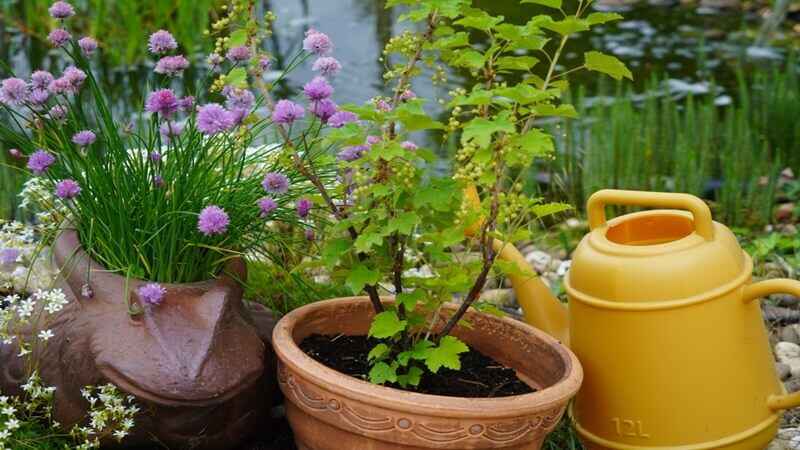Sustainability, beauty, and wellness – these all sit at the heart of gardening. What’s more, as we quickly approach 2025, more and more exciting trends are presenting themselves in the gardening world. These trends reflect changing attitudes towards the environment, health, and personal expression. From those with a seasoned green thumb to those who are new to the gardening scene, the following trends can help you make sure that your garden is ahead of the curve.
Artificial Grass
Whether you have the best artificial grass Essex has to offer or the perfect synthetic turf to deal with the California sun, it can be a great option for a number of gardens. This isn’t to say that everyone should be replacing all natural grass with an artificial alternative, but it certainly has its place in a number of garden setups. For instance, some locations are too hot to have natural grass that thrives, but they still want their space to appear natural. This is where artificial grass comes in to provide the perfect alternative.
Regenerative Gardening
One of the most prominent trends we’ve seen this year is regenerative gardening, as we see a big push towards sustainability and climate-conscious practices. Traditional gardening tends to focus solely on plant growth, whereas regenerative gardening works to enhance soil health, boost biodiversity, and create ecosystems in which local wildlife can thrive. Composting, crop rotation, and natural fertilizers are just some of the methods that are used to enrich the soil and reduce the need for chemicals.
Edible Gardens and Food Security
Just recently, we’ve seen edible gardens skyrocket in popularity. Food security and the cost of groceries are ever-growing concerns, which is why a number of people are turning to their own backyards, balconies, and windowsills to grow their own food.
Vertical gardening, hydroponics, and container planting are all innovative solutions that can be used to maximize space and grow a wide array of fruits, vegetables, and herbs. It’s not just about growing food – it’s about doing it smartly. For instance, some gardeners use companion planting to grow plants that grow better when they’re paired. This reduces the need for pesticides and fertilizers. An example of plants that flourish together are tomatoes and basil.
Beekeeping for a Sustainable Garden
Another rising trend in gardening is beekeeping, which perfectly complements the shift towards sustainability and supporting local ecosystems. Beekeeping allows gardeners to actively contribute to the health of pollinators, which are essential for the success of many plants, including fruits and vegetables. Whether you have a small backyard or an expansive garden, setting up a beehive can provide a rich supply of honey, beeswax, and improved pollination for your garden’s plants. You can easily find live honey bees for sale through local suppliers or online, making it simple to start your own colony.
This trend ties directly into regenerative gardening and wildscaping. Bees help to strengthen biodiversity, support native plants, and improve the overall health of the garden. Even beginner gardeners can start with small-scale beekeeping setups, making it an accessible and rewarding endeavor. Beekeeping also aligns with the broader trend of edible gardens, as bees are crucial for pollinating many crops, ensuring better yields and healthier plants. With beekeeping, your garden becomes not just a sanctuary for plants but also a haven for one of nature’s most important species.
Native Plants and Wildscaping
Wildscaping is another relatively new practicethat highlights the importance of cultivating plants that are indigenous to your region. These plants require less water, fertilizer, and overall care. What’s more, native plants are vital for supporting local wildlife, especially pollinators like bees and butterflies, which are crucial for our ecosystems.
Wildscaping works to create gardens that mimic natural landscapes as opposed to manicured lawns. It leads to intentional messiness that invites biodiversity, providing habitats for birds, insects, and small animals. Rather than focusing on neat rows or overly controlled environments, you might opt for the organic and free-flowing nature of wildscaping. This might include wildflower meadows, hedgerows, and water features like small ponds or rain gardens.
Indoor and Vertical Gardens
Urban living dominates modern society, and that means that the trend toward indoor and vertical gardening is becoming more and more common. Lots of people live in small apartments or homes that don’t have a lot of outdoor space, which inspires them to create lush and green environments indoors. Trellises, shelves, and hanging planters are just some of the aspects of vertical gardens that work to maximize space and grow plants upwards rather than outwards.
Living walls are becoming more and more popular, bringing a dramatic element into interior design, all while improving air quality and boosting well-being. This is without mentioning the growing popularity of indoor herb gardens that work to provide households with fresh ingredients.
